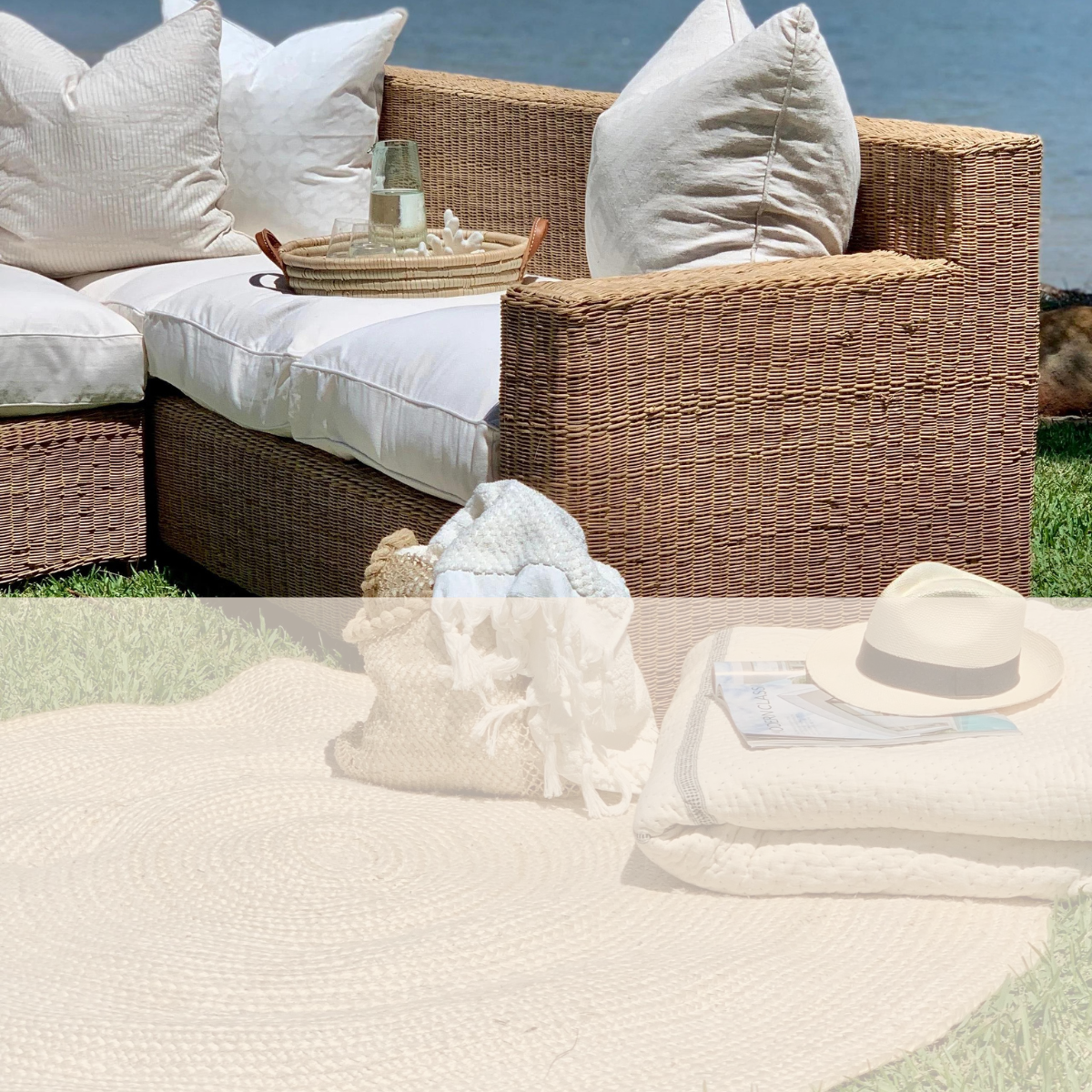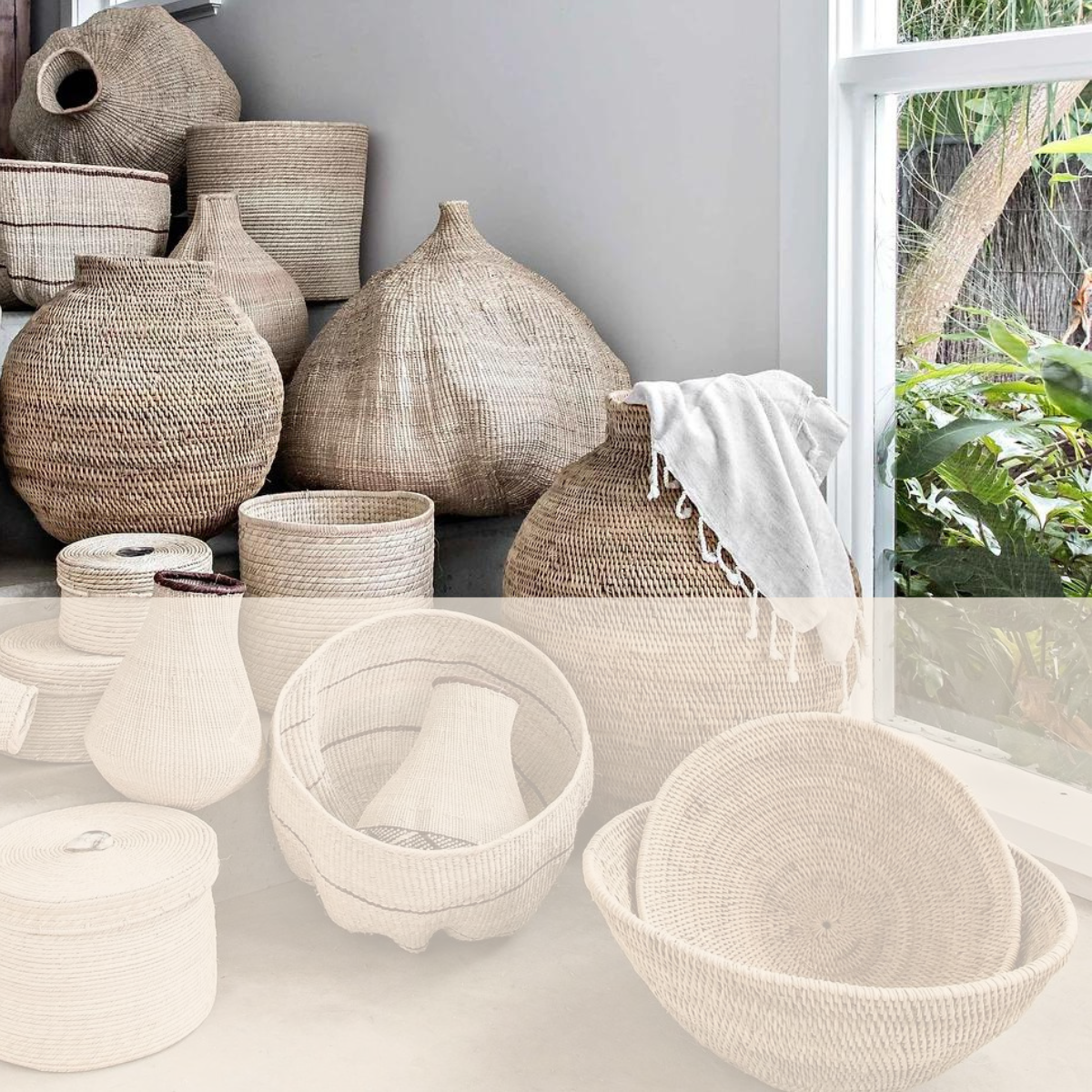Caring for your Cane
Care of Sustainable, Natural Fibres
Our furniture and homewares are handcrafted, natural and completely unique, each with their own variations as a result of their organic origin. Natural imperfections and variations are not faults but rather are a celebrated feature of our pieces, as they bringing the story of their origin and makers into your home.
Cane furniture adds natural warmth, texture and substance to any space. A feel that is hard to achieve with other pieces or materials.The natural, organic fibre integral to cane furniture requires regular cleaning and care to ensure their beauty can last for generations.
Our furniture is extremely durable and strong, thanks to the incredible artisans who create each piece. When cared for, they will last a lifetime. We want your pieces to be part of your whole life, so we’ve put together this information to help you proactively clean and, if needed, rejuvenate your cane furniture to bring it back to its original beauty. especially if you have selected a natural raw finish.
Air and Dust
Whether indoors or outdoor undercover, it is important that furniture and all woven pieces are kept dry and well-aired. This includes bringing your chairs inside if the weather is particularly humid or during a heavy rain event. Regularly cleaning, just as for all areas and contents of your home, is a vital and easy part of looking after your pieces.
Let the sunshine in! If your furniture does get damp, dry them out on a warm, sunny day when you next can.
Dust and dirt can build up within the dense, high quality weave of our pieces. Regular cleaning, just as for all other areas and contents of your home, is a vital and easy part of looking after your investment pieces.
Buildup of dust or moisture, and/or limited airflow, will lead to mould on any natural fibre inlcuding clothing, textiles and furnishings and is not an inherent fault of the product. The best cure is prevention, following the above steps.
Spills
Spills can be wiped off with a damp soapy cloth, then place in the sun to ensure any dampness dries out completely. If you have a trickier stain, softly sand back the area. We recommend using 240-grit sandpaper.

Protect and Nourish
Just like our skin, cane fibres can become brittle in particularly dry environments, when placed in excessive sun, heat or due to age. This is especially true of raw, natural state pieces with no varnish. We recommend a treatment of furniture oil to unvarnished, natural state pieces every six months to a year, depending on the environment where you keep your pieces. This will keep your fibres supple and moisturised to prevent cracking. We use the following treatments on our own furniture to protect and nourish.
- tung oil (thinned with mineral turpentine)
- boiled linseed oil (thinned with mineral turpentine)
- furniture oil spray (for one chair, or smaller pieces)
Tung Oil is preferred as it maintains the original colour, with boiled linseed oil darkening pieces slightly. Furniture oil spray also maintains the original colour.
Rejuvenation
If dust, dirt, mildew or mould has been allowed to build up over time, or stains have begun to appear on your cane furniture, a more thorough cleaning treatment is required.
- Choose a sunny day to clean your pieces. It’s important they dry fully after you’ve cleaned them.
- Start with a similar clean outlined above; dust or vacuum thoroughly to ensure all dirt, dust and mildew has been removed. It’s important they are removed before the piece gets wet in the next steps of cleaning.
- Mix together dish-washing liquid and warm water and scrub your piece with the soapy mix, using a dish-washing bristle brush.
- Wipe off soap residue with a damp cloth.
- Blot dry with a towel, and place in direct sunlight. Allow a full day of drying and wait 24 hours before replacing seat pads, cushions or throws.
- Furniture that is situated in coastal areas, frequently exposed to heavy mists can form a residue over time. Iron oxide stains in wood are usually dark spots caused by prolonged exposure to water or metal. Iron oxide reacts with tannins in the wood, staining it black. Mould buildup can also cause stains.
There are several ways to restore these stubborn areas. We recommend either oxalic acid or 30 Second Outdoor Cleaner which we have used successfully to remove stains from natural fibres. Ensure that a patch test is done first, and follow safety directions. Brush or spray the affected area, and then put it out in the sun to dry and re-varnish it, if you have a varnished or painted product.

With care and love, your gorgeous handcrafted furniture, homewares and lighting can last a lifetime and bring joy for many years to come.
If you have any questions about care and maintenance please get in touch, we are here to help.
Best wishes,
Regan and Georgia



